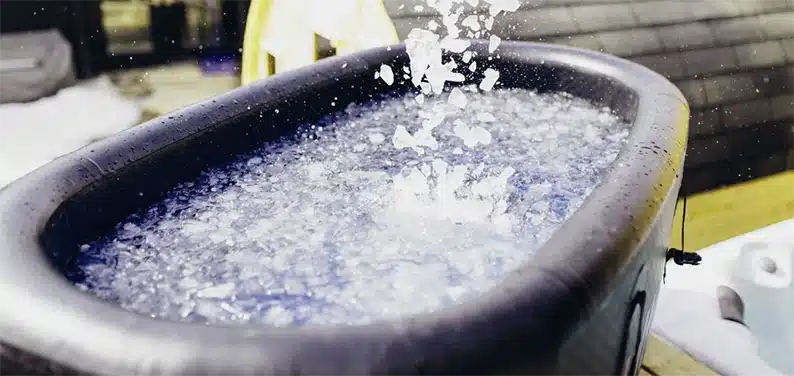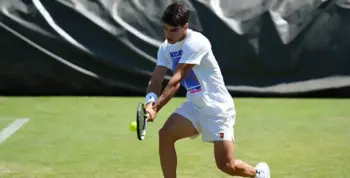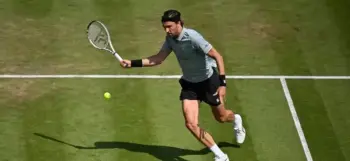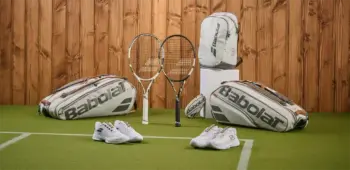Most athletes, tennis players as well, are always on the lookout for strategies to enhance their fitness, performance or recovery. Among the many techniques available, cold plunge therapy has emerged as a game-changer.
Renowned for its simplicity yet effectiveness, this cold bath method has become increasingly popular among tennis players looking to optimise recovery and maintain peak condition throughout tough tournaments or training sessions.
Understanding Cold Plunge Therapy
Cold plunge therapy involves immersing oneself in cold water, typically around 50°F to 59°F (10°C to 15°C), immediately after a physical session. This practice is not just a test of mental fortitude but a scientifically backed recovery technique that reduces inflammation, decreases muscle soreness and enhances recovery speed.
The cold water causes blood vessels to constrict, flushing out metabolic waste from the muscles. Once the body rewarms, blood flow increases, accelerating the delivery of nutrients needed for repair.
The Cold Plunge Edge in Tennis
Tennis is a sport that demands high levels of physical endurance, agility, and mental focus. The rapid directional changes, explosive sprints, and the need for sustained concentration during matches place significant strain on an athlete’s body. Recovery, therefore, is not just about rest but actively aiding the body’s repair mechanisms. Cold plunge therapy provides a quick and effective means to reduce the risk of injury, lessen muscle soreness, and improve overall performance.
Champions of the Cold
Several top-tier tennis players have attributed part of their success and longevity in the sport to incorporating cold plunge therapy into their recovery routines:

- Novak Djokovic: The Serbian star, no 1 on the ATP world rankings, known for his extraordinary resilience and stamina on the court, uses cold water immersion as a staple in his recovery protocol. Djokovic’s ability to outlast opponents in marathon matches is partly credited to his comprehensive approach to recovery, where cold plunge therapy plays a crucial role.
- Andy Murray: The former World No. 1 has openly discussed his use of ice baths, a form of cold plunge therapy, especially during tournaments. This practice has been integral to his recovery strategy, helping him stay competitive at the highest levels of the game.
- Rafael Nadal: Known for his ferocious intensity and clay-court mastery, Nadal has also utilized cold plunge therapy to deal with the physical demands of his playing style. His success on tour, marked by numerous comebacks from injury, highlights the importance of effective recovery techniques.
- Serena Williams: The 23-time Grand Slam champion has not shied away from sharing her recovery methods, including cold water immersion. Williams’ longevity and success in tennis are a testament to her dedication to maintaining peak physical condition, with cold plunge therapy being a key component.
Cold Plunge Tub Therapy
For tennis players aiming to incorporate cold plunge therapy into their regimen, the approach is straightforward but requires consistency. Immersing in cold water for a few minutes after intense physical activity can significantly aid in recovery. However, it’s crucial to individualize the practice, considering factors such as duration and water temperature, to suit personal tolerance and recovery needs.
For many, the duration for a cold plunge could be only 2-3 minutes. Or even shorter in the beginning if you’re new to this method.
It’s important to take breaks between cold plunges as well, in order to maximise the benefits and keep away any negative side effects.
After the ice bath, usually it’s better to wait for a while before hitting a warm shower right away. This way you warm up naturally and your body can adjust to the temperature change.
The Future of Recovery in Tennis
As more research emerges supporting the benefits of cold plunge therapy for athletic recovery, its adoption in tennis is likely to grow. This method, coupled with other recovery strategies, can help athletes maintain high performance levels, reduce downtime due to injury and possibly extend their careers.
To wrap it up…
Cold plunge therapy stands out as a potent recovery tool for tennis players, offering a blend of physical and mental benefits. By embracing this practice, athletes can enjoy quicker recovery times, enhanced performance and a greater ability to withstand the rigors and pain of professional tennis.
Even though we are not pro’s, we’ll surely now take a break from betting on tennis ATP matches, go play some tennis and try out this recovery method.
As the sport continues to evolve, the adoption of scientifically backed recovery methods like cold plunge tub therapy will be important for the future of tennis training and performance.















